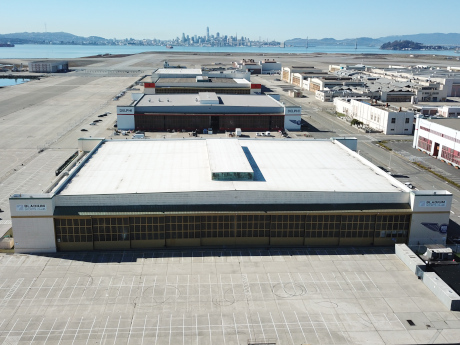— By David Nelson, regional president of brokerage for Northern California and Nevada, Kidder Mathews —
After record figures across most U.S. industrial markets in 2021 and 2022, key fundamentals cooled in 2023 and have been recalibrating ever since. Total net absorption has been negative in recent quarters, sublease space is on the rise, vacancy and availability rates have been steadily inching up, and average asking lease rates are relatively flat. Furthermore, the recent surge in development activity due to the rise in ecommerce penetration has been slowly drying up with construction starts dropping by more than 60 percent in 2023 and 2024.
Core industrial markets in the Bay Area experienced notable increases in both vacancy and availability. Silicon Valley vacancy rose from between 1.5 percent and 2.5 percent last year to 3 percent and 4 percent in 2024. Meanwhile, East Bay rose from 3.5 percent and 4 percent in 2023 to 5.5 percent and 6.5 percent in second-quarter 2024.
During the first half of the year, an increase in sublease space has been a major contributor to the higher rates. They have increased from the pre-COVID average of 9 percent of total available space to 19 percent at the end of the second quarter of 2024, equaling nearly 7 million square feet. While the newer sublease spaces have been hitting the market for a variety of reasons, many have been due to tenants rightsizing their space needs across the region. Despite this increase, vacancy and availability rates remain relatively healthy, especially compared to other property sectors.
While Bay Area leasing activity is currently down 40 percent to 45 percent compared to the boom in 2021 and 2022 — and net absorption has been negative for five straight quarters — the recent deceleration of development activity is expected to temper near-term challenges. It is expected to do this by limiting overall inventory growth and eventually leading to better market equilibrium. As a result, short-term vacancy rates are anticipated to rise, but long-term occupancy is expected to exhibit growth as businesses prioritize modern, high-quality industrial facilities coupled with efficient supply chain strategies. Rent growth is also in the midst of a correction, falling from 15 percent year-over-year growth in 2022 to relatively flat growth in 2024, with some submarkets experiencing slightly negative rent growth.
From a capital markets perspective, total sales volume has been slow across all product types. Industrial volume in the region dropped by roughly 40 percent in 2023 and has seen continued slowing in 2024. The rising interest rate trend has contributed to the challenges, along with a significant volume of commercial mortgages — $929 billion nationwide — maturing in 2024. There has also been a slight disconnect between many buyers and sellers surrounding property value and realistic pricing expectations. Despite these headwinds, private capital is entering the market, and flexible refinancing options are being offered to address potential distress among property owners.
Though near-term uncertainty exists, the Bay Area’s industrial sector fundamentals point to a promising future, with long-term demand and modern logistics fueling a potential bull market in the years ahead.


